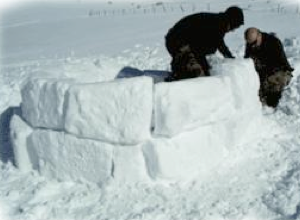Your Cure for Cold Winter Work
Your Cure for Cold Winter Work
 Cold weather puts the brakes on a lot of acid proofing work. Many polymer based construction materials cure so slowly below 50°F that they become impractical to use in cold weather. The cost to tent and heat work areas often persuades planners to schedule installation of chemical-resistant linings during milder weather. But if your construction season is short, or you just have to get that project done before spring, it’s helpful to know which materials are available in “cold-cure” formulations. Here are a few to get you started:
Cold weather puts the brakes on a lot of acid proofing work. Many polymer based construction materials cure so slowly below 50°F that they become impractical to use in cold weather. The cost to tent and heat work areas often persuades planners to schedule installation of chemical-resistant linings during milder weather. But if your construction season is short, or you just have to get that project done before spring, it’s helpful to know which materials are available in “cold-cure” formulations. Here are a few to get you started:
Rubberized asphalt sheeting suitable for cold temperatures
| Furan acid brick mortar | Add accelerator |
| Phenolic acid brick mortar | Add accelerator |
| Epoxy primer, coatings, flooring | Substitute cold-cure hardener |
| Epoxy tile grout and adhesive | Substitute cold-cure hardener |
| Epoxy polymer concrete | Substitute cold-cure hardener |
| Hot-melt asphalt membrane | Suitable for cold temperatures |
Many of these additives and alternative hardeners will enable the materials to cure in a reasonable amount of time at temperatures as low as 35°F. In some cases the materials can be used in even colder temperatures if you are able to wait a little longer for them to reach full cure. Check with the material manufacturer for specific capabilities of their cold-cure materials.
If you were really hoping to find another product on this list—a vinyl ester or a potassium silicate, perhaps—don’t despair. For larger projects, some material manufacturers can custom blend materials to accelerate the cure of these products under cool conditions.
When ambient and substrate temperatures are low, it’s often useful to warm the materials up to around 70°F just before mixing them to help speed their cure. And remember!—most of the mass is in the fillers, so get those pallets of powder, bricks, or tiles into a heated warehouse or trailer if you can.
The bottom line? Consult with you preferred material supplier to explore the options when you must get that acid proofing job done over the winter. You might find materials that will work for you without having to build a heated circus tent over your plant. Then again, with all the activity that goes on during some plant shut downs, a circus tent might be strangely fitting…

